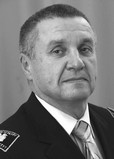Morphological characteristics of competitive success in martial arts
Фотографии:
ˑ:
Dr.Hab., Professor G.V. Rudenko1
Dr.Biol., Professor M.G. Tkachuk2
V.A. Dorofeev1
1St. Petersburg Mining University, St. Petersburg
2Lesgaft National State University of Physical Education, Sport and Health, St. Petersburg
Objective of the study was to conduct a comparative analysis of morphological indicators determining the competitive success in taekwondo, karate and judo.
Methods and structure of the study. Sampled for the study were the 18-25 year-old athletes specializing in taekwondo, karate and judo (n=126), middle weight class, with sports qualifications not lower than I senior rank (decanted massif), of which 38 athletes - masters of sports, members of the national teams of St. Petersburg, participants of international competitions ("successful" athletes). Their experience in martial arts was on the average 10 years. We measured the following anthropometric indicators of the subjects: body mass and body length, its partial, circumferential and transverse dimensions, skin-fat thickness. The athletes’ physique type was evaluated using the Bunak method.
Results and conclusions. With the same body mass, "successful" athletes differ from martial artists of decanted massif by the larger partial, transverse and circumferential body dimensions, as well as by the larger body-weight ratio. The correlation analysis of anthropometric characteristics and sports qualifications revealed the following relationships.
For karatekas, the significant morphological indicators are as follows: length of the upper and lower limbs, circumferential dimensions of the shoulder and forearm, and the acromial diameter. For taekwondokas - length of the trunk and lower leg, circumferential dimensions of the thigh and lower leg, and iliopectineal diameter.
For judokas – chest, shoulder and thigh circumferences, diameters of the distal epiphyses of the thigh and lower leg.
All athletes had a muscular constitutional type; however, belonging to this somatotype is not a prerequisite for achieving a high level of sports mastery in martial arts. The findings can be used as morphological indicators in forecasting the success of competitive activity in martial arts.
Keywords: anthropometry, taekwondo, karate, judo, model characteristics.
References
- Afanasieva I.A. Geneticheskie osobennosti treniruemosti taekvondistov i ih sportivnyiy otbor [Genetic features of taekwondo trainability and their sports selection]. St. Petersburg: [s.n.], 2004. 96 p.
- Bakulev S.E., Tajmazov V.A. Genealogicheskie osnovyi prognozirovaniya uspeshnosti sorevnovatelnoy deyatelnosti edinobortsev [Genealogical basics for predicting success of competitive activities of martial artists]. Uchenye zapiski universiteta im. P.F. Lesgafta. 2006. no. 19. pp. 7-15.
- Barnikova I.E., Samsonova A.V. Informatsionnyie tehnologii v obrabotke anketnyih dannyih v pedagogike i biomehanike sporta [Information technology in personal data processing in pedagogy and sport biomechanics]. Study guide. St. Petersburg: [s.n.], 2017. 103 p.
- Bunak V.V. Antropometriya: prakticheskiy kurs [Anthropometry: practical course]. M.: Uchpedgiz, 1941. 376 p.
- Kuvanov V.A., Korostelev E.N., Zaytsev A.V. Upravlenie myshechnym tonusom v sportivnoy borbe [Management of muscle tone in sports wrestling]. Teoriya i praktika fiz. kultury, 2018, no. 4, pp. 57-59.
- Sobolev A.A., M.G. Tkachuk, A.A. Levitskiy Morfofunktsionalnyie kriterii byistroy treniruemosti sambistov [Morphological and functional criteria for fast trainability of sambo wrestlers]. Uchenye zapiski universiteta im. P.F. Lesgafta. 2018 # 7. pp. 247-250.
- Tkachuk M.G., A.A. Dyusenova, Li Hyun Chzhu Vzaimosvyaz mezhdu morfologicheskimi i psihologicheskimi harakteristikami sportsmenov [Eelationship between morphological and psychological characteristics of athletes]. «Sovremennyie aspektyi fundamentalnoy i prikladnoy morfologii» [Modern aspects of fundamental and applied morphology]. Proc. nat. scientific conf. ded. 100th anniv. prof. M.G. Prives. St. Petersburg, 2004. pp. 230-231.



 Журнал "THEORY AND PRACTICE
Журнал "THEORY AND PRACTICE